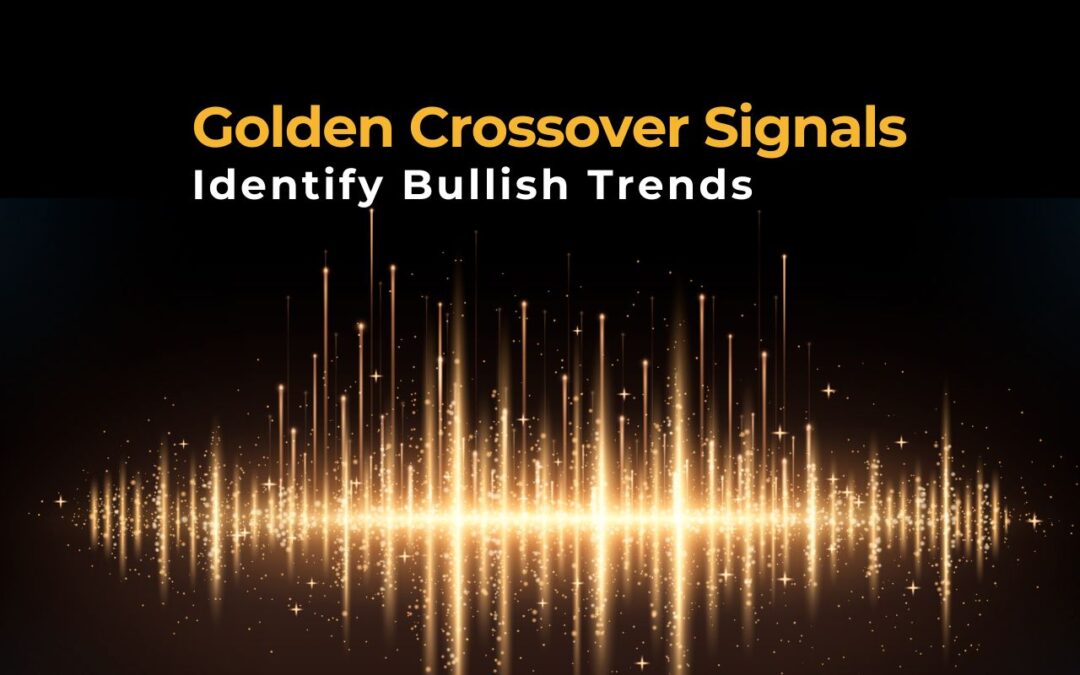In technical analysis, traders often rely on chart patterns and moving averages to anticipate market direction. One of the most trusted signals is the golden crossover. This pattern occurs when a short-term moving average crosses above a long-term moving average, signaling a possible shift toward a bullish trend.
While not foolproof, this crossover is seen as a strong sign of momentum gaining strength. In this article, we will break down how golden crossover signals help identify bullish trends.
How Does the Golden Crossover Work?
The golden crossover happens when a stock’s 50-day moving average rises above its 200-day moving average. This shift shows that short-term prices are gaining strength over the long term, often marking the start of an upward trend.
Traders watch this closely because it suggests momentum is changing. In golden crossover stocks, this pattern can mean growing investor confidence and increased buying interest.
While it’s not a guarantee of gains, many investors see it as a sign to enter the market. It works best when supported by rising volume and steady price action.
Why Does the Golden Crossover Signal a Bullish Trend?
Let’s take a closer look at why this signal is seen as a reliable indicator of bullish momentum, especially when backed by real market behavior.
1. Momentum Shift Alert
A momentum shift happens when recent prices start staying consistently higher than older ones. This tells us that buying pressure is increasing.
For example, if a stock like Cochin Shipyard share price trades below ₹2000 for months, then gradually moves above ₹2,200 and stays there, it reflects growing confidence. When this price rise pulls the 50-day average above the 200-day average, it confirms the shift.
Traders often see this as an early sign of a bullish move and begin taking long positions.
2. Confidence Builder
When a golden crossover forms, it’s often accompanied by a noticeable increase in trading volume. This rise in volume suggests that more investors are stepping in with conviction, not just reacting casually.
Higher participation confirms that the shift in trend is being taken seriously by the market. As more traders buy in, confidence builds across the board.
This collective action helps sustain the upward momentum and adds a layer of reliability to what could otherwise be seen as just a technical event.
3. Self-Fulfilling Effect
The self-fulfilling effect happens because many traders, funds, and analysts watch for golden cross signals. Once the crossover appears, they enter the market expecting a rally. This collective action pushes the price higher, confirming their belief.
This behavior often turns expectation into actual market movement.
Confirmation & Reliability of the Pattern
But just spotting a golden crossover isn’t enough. But how do you know it’s the real deal and not a trap? That’s where confirmation and reliability come in.
Volume and Other Indicators as a Validating Factor
When the 50‑day moving average crosses above the 200‑day moving average, high trading volume at that moment acts like a seal of approval; it shows real buying interest.
A volume spike confirms the price move is supported by many participants, making the signal more trustworthy.
But if volume is low, the crossover may be weak, a false alarm from shallow buying activity.
The same goes for the usage of other indicators. When a golden crossover happens, MACD flips bullish (its fast EMA crosses above the slow EMA), showing upward momentum. If the MACD crossed up and RSI climbed higher, that would support a stock to rise further.
Acknowledging Limitations
All moving average crossovers, including the golden cross, are lagging indicators that rely on past price data.
By the time they give a signal, much of the trend may already have happened. In sideways or choppy markets, they often give false signals or whipsaws.
They also ignore important news or events. That is why it is better to use them with other tools and proper risk control.
Conclusion
The golden crossover is a simple yet powerful signal that often points to a strong upward trend in prices. While it may come a bit late, it works well when combined with volume and other tools. It helps traders make confident decisions when markets start to turn bullish.













